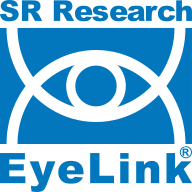How Can I Improve the Accuracy of My Running Tracker on PyGaze for Better Data Collection?
I have been using PyGaze for some time now to track my gaze data, and recently, I have been facing some issues with my running tracker. I’m hoping to get some insight and help from the community here.
The main issue I've encountered is that the tracker doesn’t seem to provide the most accurate readings when it comes to tracking rapid eye movements during running. As I understand, this tool is designed to work well in controlled environments, but my usage scenario is a bit different—I'm tracking my eye movements while engaging in physical activity. It’s important to me because I use the data to understand how my gaze shifts in response to different paces, which I believe could offer valuable insights into how eye movements correlate with physical exertion. However, this context seems to present a challenge for the tracker.
I’ve noticed that sometimes the tracker lags behind my eye movements when I’m running at a quicker pace. This delay can result in a mismatch between the recorded gaze data and the actual movements I’m making, which makes the results somewhat unreliable. I’ve tried using the tool at various running speeds, and although it works decently at a slow pace, the accuracy suffers as I increase my speed.
One idea I had was to increase the sampling rate of the tracker to improve its ability to capture rapid eye movements more effectively. I wonder if this could be done through PyGaze's settings, or if there’s another way to fine-tune it for faster tracking without introducing too much noise into the data. Has anyone here had experience modifying PyGaze’s settings for this purpose? If so, I would love to hear how you approached this challenge.
I’m also thinking about the possibility of implementing some pre-processing steps before the data is recorded, to potentially eliminate any noise or irrelevant signals that might interfere with tracking during my runs. Maybe filtering out certain frequencies or using a more precise calibration process could help in improving the quality of the data. What do you think about this idea? Do you have any suggestions for tools or methods that could be used to preprocess the data?
Beyond these adjustments, I’m wondering whether the running environment itself could be influencing the accuracy of the data. When I’m running outdoors, for instance, the lighting conditions change frequently, and I also encounter various distractions that could affect the tracker’s performance. Is there a way to minimize these external factors, or perhaps an alternative environment that would allow the tool to perform better during physical activity?
Real-time running path tracker refers to a tool or device designed to continuously monitor and record the path taken during a running activity in real-time. In my case, this tracker is integrated with PyGaze and focuses on analyzing eye movements while running, as well as tracking the real-time running path. This kind of tracker typically uses GPS. In my use case, this tracker would ideally provide a clear view of how my gaze shifts with respect to the terrain and speed, giving me a comprehensive dataset for analysis.
When it comes to the tracker, I feel positive about the overall concept and functionality, and I think it has great potential in my use case. The ability to track and record eye movements while engaging in different activities is fascinating, and I can see many opportunities for refining it further. One aspect I particularly admire is the tracker’s ability to handle relatively complex data collection processes with a simple interface, which makes it incredibly user-friendly despite its advanced capabilities. I’m simply looking for ways to make it more responsive and precise in a dynamic, fast-paced environment like running.
If anyone has used PyGaze in a similar context or has any ideas or resources to share that could help me enhance the running tracker’s performance, I would greatly appreciate it. I’m not looking for a drastic overhaul but rather some small tweaks or tips that could go a long way in improving the tracking accuracy and overall experience. This kind of precision would help me gather more accurate and valuable data, which is the key to my progress.
I look forward to hearing your thoughts and suggestions!

